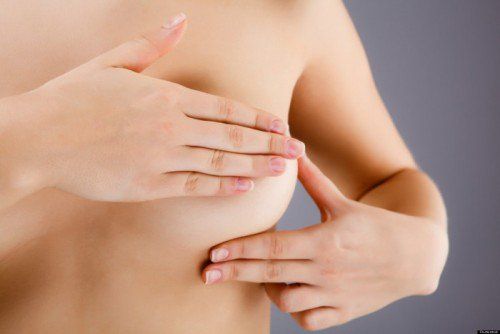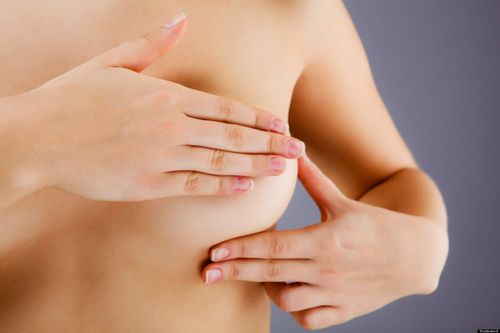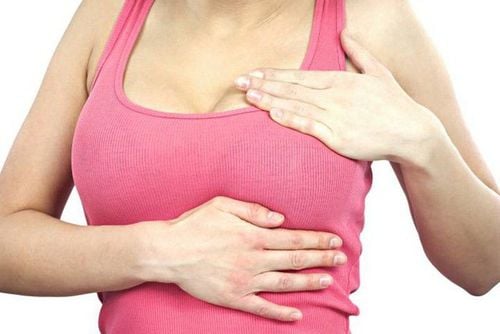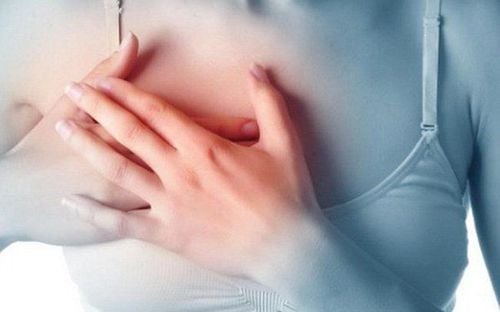This is an automatically translated article.
Beautiful, round, healthy breasts are the desire of most women. However, not all women know how to take good care of their breasts and protect themselves from health risks such as breast cancer. Do a proper breast self-exam to detect breast problems and prevent breast cancer.Video content is professionally consulted by BSCKI La Thi Tiem, Oncologist, Vinmec Times City International Hospital
1. 2 steps of breast self-examination at home
You should perform 2 steps of breast self-examination at home as below:1.1 Breast self-examination by palpation
Check the outer right breast: Lie on your back to make your breasts easy to check, place a thin pillow in the back area. below the better. Tilt to the LEFT side to examine your RIGHT breast. Raise the right hand and place the back of the hand on the forehead. Test with three middle fingers: Use the underside of the three tips of the middle fingers to check. Always keep your fingers straight and close together. Start by moving in a small circle with the diameter of your 3 fingers, moving from top to bottom. It needs to be done at 3 different pressure levels. Light pressure is used the first time to detect abnormalities in the tissues closest to the skin, the second time medium pressure is used to feel the tissues a little deeper, and the third time uses strong pressure to feel the deeper tissues. near the ribcage and ribs before moving on to the next position. Feel the spiral line: Start palpating in a spiral from the outside to the inside, the starting position is level with the armpit and the bottom is horizontal with the line under the bra. Move slowly from the outside to the inside until it touches the nipple. Do not lift your finger from the breast while moving and repeat 3 times with three different levels of pressure. Examine the inner half of the RIGHT breast: Remove the pillow under your back, remove your hand from your forehead, and place your arm at an angle on the bed. Carefully examine the nipple area in a circular pattern without squeezing the nipple. Check the remaining breast tissue by zigzagging up and down, until the center of the breast is reached, three times with the three pressures as above. 1.2 Visual breast self-exam
Barely, standing in front of a mirror with full light, look closely at your breasts in 3 positions as shown in pictures 1,2 and 3 to check for changes in your breasts
Observe the shape: Compare one breast with the other. The breasts are often completely uneven but never change in size suddenly. Skin observation: Check the breast skin for rashes, redness, unusual nodules, wrinkles, dimples, or orange papules. Look at the nipple: Check for any changes such as nipple retraction, sores, redness, itching, swelling, or discharge from the nipple. Observe the venous system on the breast: Check for abnormal changes Raise the breast with both hands: Observe the lower 1/2 of the breast and the breast ridge for any changes
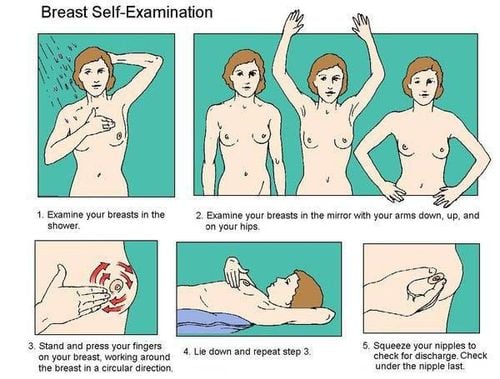
2. Notes when performing a breast exam
Get in the habit of doing a breast self-exam once a month to get used to the shape and feel of your breasts. If you still have your period, choose a fixed date during the first week after your period stops to self-examine. If you are menopausal, pregnant, or have irregular periods, choose an easy to remember, fixed day of the month to check. Breast self-examination is NOT a substitute for screening for breast cancer with mammography, breast ultrasound, or biopsy to analyze a sample of suspected breast tissue. Doctors will help you make the right decision when detecting breast abnormalities. When you do a breast self-exam and discover one or more of the following changes:
Feel a hard lump in the breast area. There is a change in the shape and size of the breast. See if the skin is thickened, has orange bumps, is red, swollen, or seems different from the surrounding area. Indentations, bumps, or scratches in the skin of the breast Changes in the nipple such as nipples that are pushed out or indented, clear or pink-red or yellow discharge Breasts that are red, hot, swollen, or painful all or only one area of the breast Itching, scaling, sores, or a rash on the breast or nipple The doctor will visually examine your breast and will have you perform a mammogram and mammogram. X-ray mammogram to evaluate depending on your abnormality. If in doubt, the doctor will order additional imaging studies such as magnetic resonance mammography (MRI) and/or biopsy of the breast to find out what the tumor is.
Get in the habit of examining your breasts over and over, the more you know about them and the easier it will be to tell if something suddenly changes.
Please dial HOTLINE for more information or register for an appointment HERE. Download MyVinmec app to make appointments faster and to manage your bookings easily.





